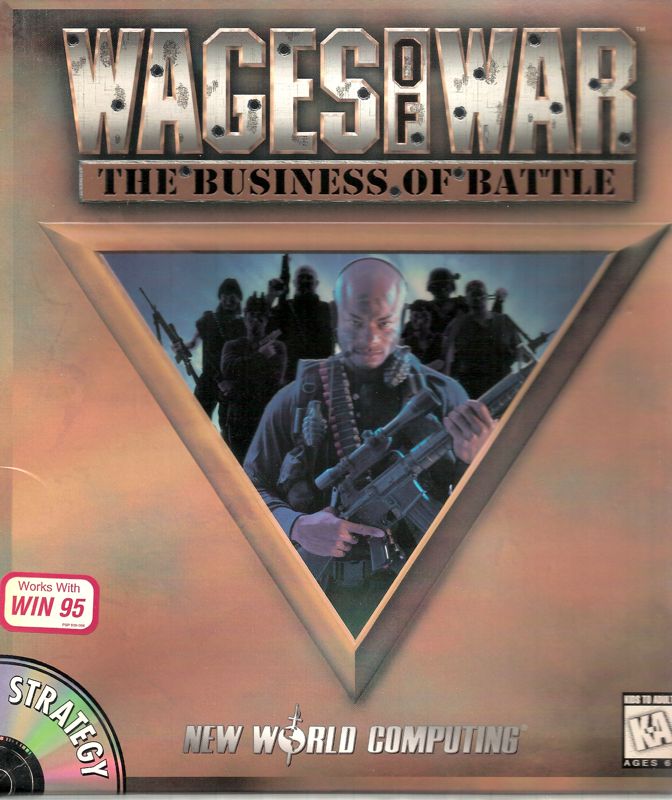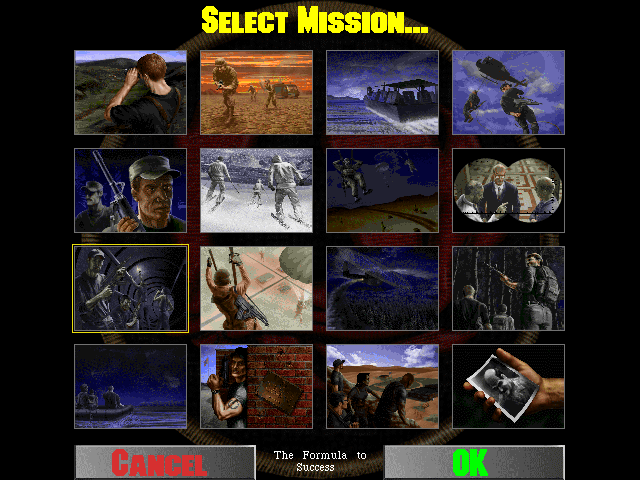Retro Replay Review
Gameplay
Wages of War: The Business of Battle delivers an intricate blend of turn-based tactics and resource management that challenges players on multiple fronts. At its core, you lead a fledgling mercenary company in 2001, bidding on contracts, equipping teams, and executing missions against both computer-controlled enemies and rival companies. Each mission unfolds on detailed maps where careful planning of insertion points, movement phases, and engagement tactics is vital to success.
(HEY YOU!! We hope you enjoy! We try not to run ads. So basically, this is a very expensive hobby running this site. Please consider joining us for updates, forums, and more. Network w/ us to make some cash or friends while retro gaming, and you can win some free retro games for posting. Okay, carry on 👍)
The economic layer is equally compelling: you must balance profitability with firepower. Buying high-end rifles, body armor, and specialized gear can tilt the odds in your favor, but overspending quickly eats into your bottom line. Casualties further strain your finances, forcing you to recruit and train replacements at a cost. This tightrope between operational effectiveness and fiscal prudence creates a tense, rewarding gameplay loop that keeps every decision meaningful.
The AI opponents and competing mercenary outfits behave dynamically, adjusting tactics and contract bids based on your reputation and success. Early missions might feel punishing as you learn curve-steepening mechanics like morale, fatigue, and concealment. However, once you master the flow of solitude planning phases and real-time firefights, the sense of accomplishment in pulling off a high-profit, low-casualty raid is immensely satisfying. The replayability is high: different equipment loadouts, mission objectives, and enemy compositions ensure no two campaigns play out exactly the same.
Graphics
Visually, Wages of War leans into its early-2000s heritage with an isometric, 2D tile system that emphasizes clarity over flashy effects. Terrain tiles—ranging from desert sands to urban rubble—are crisply rendered, aiding in tactical decision-making by clearly delineating cover, obstacles, and elevation changes. Soldier sprites are small but distinct, allowing you to track individual mercenaries without overwhelming the battlefield canvas.
Animations are functional rather than cinematic, showcasing weapon recoil, grenades arcing overhead, and quick reloads. While there aren’t any high-polish cutscenes, the UI complements the visuals effectively: weapon stats, health bars, and minimaps are laid out cleanly, keeping critical information at your fingertips. Map lighting and shadow effects are subtle but help convey time of day during nocturnal infiltrations or sunrise assaults.
Though dated by modern standards, the graphics serve the tactical simulation admirably. Detail levels are adjustable, and load times remain swift even on modest hardware. For players focused on deep strategic play rather than visual spectacle, Wages of War strikes a solid balance that supports immersion without taxing nothing more than nostalgia.
Story
Rather than presenting a linear narrative, Wages of War crafts an emergent storyline driven by your choices and mission outcomes. You start as a small-time contractor, and over dozens of engagements, your reputation grows—attracting higher-paying jobs from corporate warlords, humanitarian relief agencies, or even shadowy regimes. Each contract comes with its own scenario brief, objectives, and intel, allowing the drama to unfold organically through gameplay.
Competing mercenary outfits add a subplot of corporate intrigue. You might find another company swooping in to hijack a lucrative contract or facing off against the same rival on back-to-back missions. These recurring antagonists bring tension to the global campaign map, making the world feel alive and reactive. While there’s no voiced dialogue or scripted character arcs, the strategic decisions you make—such as choosing a high-risk rescue operation over a safer convoy escort—shape your personal mercenary saga.
The 2001 setting adds subtle flavor, from the choice of firearms to the geopolitical backdrop of post-Cold War conflicts. Textual mission debriefs and occasional news headlines on the campaign map evoke a world where private military companies fill power vacuums. This loosely woven context fuels the player’s imagination, ensuring that every firefight and boardroom negotiation carries weight.
Overall Experience
Wages of War: The Business of Battle stands out as a deep, rewarding simulation for players who relish strategic depth and emergent storytelling. Its dual focus on tactical combat and profit-oriented management offers a uniquely challenging experience that few other titles replicate. Casual players may find the initial learning curve steep, but perseverance is richly rewarded with tense firefights and satisfying financial windfalls.
The blend of austere visuals, rigorous mechanics, and open-ended progression makes this game a niche gem. Fans of classic tactical sims will appreciate the meticulous attention to gear selection, mission planning, and squad preservation. Meanwhile, those drawn to economic strategy will find the mercenary market—where reputation dictates your next big payday—to be a compelling sandbox of risk and reward.
In an era crowded with action-oriented shooters, Wages of War offers a refreshing return to thoughtful, turn-based might-meets-money gameplay. If you’re seeking a title that demands patience, strategic foresight, and a mind for profits, this mercenary management sim is ready to test your wits—and your bottom line.
 Retro Replay Retro Replay gaming reviews, news, emulation, geek stuff and more!
Retro Replay Retro Replay gaming reviews, news, emulation, geek stuff and more!









Reviews
There are no reviews yet.